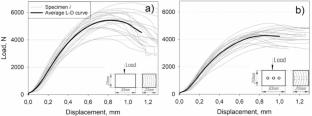Effect of drilling resistance measurement on residual load capacity of Scots pine (Pinus sylvestris L.)
Abstract
Drilling resistance (DR) measurements constitute a common method to evaluate the properties and internal conditions of wood. Generally, DR is used to monitor and assess the structural health of timber constructions. This study aimed at evaluating the influence of 3-mm holes left after drilling resistance measurements on the residual failure load of the wood specimens tested under the bending and compression conditions. Laboratory tests were performed using defect-free conditioned specimens of Scots pine (Pinus sylvestris L.) with various cross-sections. Drilling holes were made with an IML-RESI PD 400 tool and a new standard spade drill bit (IML System GmbH, Wiesloch, Germany) in different locations of the cross-section. We used a finite element modelling software to simulate the bending of drilled specimens and assess the accuracy of experimental data. For wood assessment, an orthotropic body model was used with regard to the non-linearity of the load deflection curve. The failure load in static bending was significantly influenced by the presence and location of holes in the specimens. However, this effect varied across the different cross-sections. It is recommended to use DR for the evaluation of structural timber in the areas of wood elements that are not exposed to the maximum tensile stresses. The influence of holes after DR measurements on residual failure load in compression was proportional to the wood cross-section loss and is minor for structural-sized wood constructions.



 求助内容:
求助内容: 应助结果提醒方式:
应助结果提醒方式:


